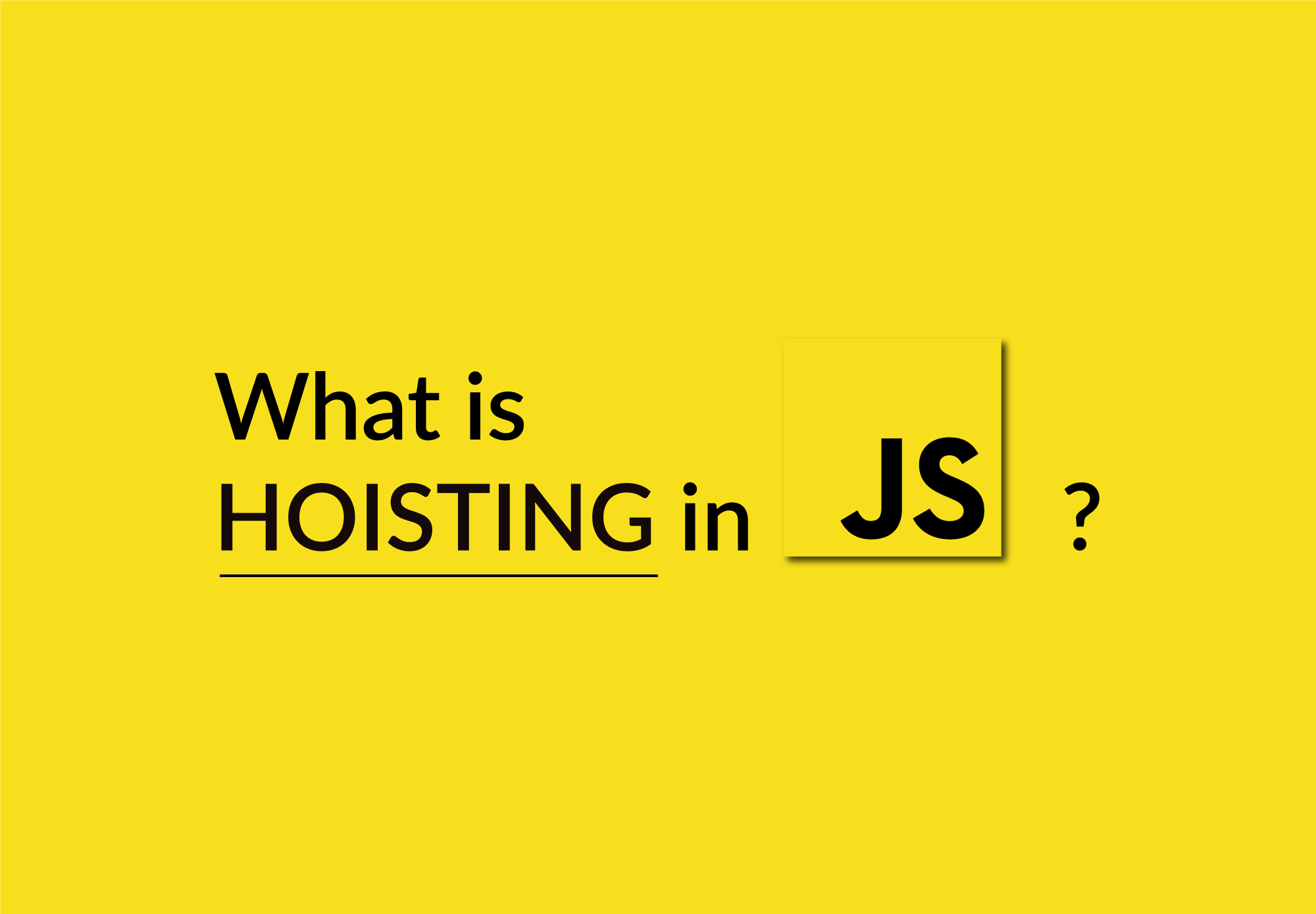What is Hoisting in JavaScript?
 Shruti Singh
Shruti Singh
So as we know JavaScript is synchronous by default i.e. JS run line by line. For example, observe the code below and tell the output.
function sum(a , b){
return a + b;
}
console.log(sum(5 , 5))
//Output => 10
How about we declare a variable at last and try to send it as an argument in the sum function? What do you think will be the output?
function sum(a , b){
return a + b;
}
console.log(sum(a , 5))
let a = 10;
We will get a Reference error. That's because we are trying to access the variable's value before it has been declared and initialized.

Okay now let me confuse you. What will be the output of the following code? Will it throw an error or not?
console.log(sum(5 , 5))
function sum(a,b){
return (a + b);
}
//Output => 10
Yes, it will give us the output without throwing an error. This is where the concept of Hoisting comes into play.
Definition of Hoisting
Hoisting is a behaviour in JS where JS takes all the function and variable declarations at the top which makes it easy for us to access them before they are declared.
Function declarations are fully hoisted, meaning both the declaration and the function definition are moved to the top of the scope.
// Function Declaration
function greet(name) {
console.log("Hello, " + name + "!");
}
greet('Developers')
Hoisting with Arrow functions
Remember arrow functions are not hoisted and that's because arrow functions are defined as a variable and variables never get hoisted.
const SumArrowFn = (a , b) => {
return a + b;
}
console.log(SumArrowFn( 10 , 90 ))
//Output => 100
Hoisting of Variables
There is a difference in Hoisting behaviour between variables declared with var and those declared with let or const.
var : Variables declared with var are hoisted but initialized with undefined
let & const : Variables declared with let and const are hoisted but they remain in a "Temporal dead zone" until the actual declaration statement is encountered.
Temporal dead zone: This is a concept in JavaScript that refers to the period between the start of the scope where a variable is declared and the point where the variable is formally declared in the code. During this period, trying to access the variable results in a ReferenceError.
NOTE: Only the declarations are hoisted, not initializations. 👇This is what I mean.
console.log(sum(5,5))
console.log(x)//Uncaught ReferenceError: Cannot access 'x' before initialization
let x = 20; // Declarationsand Initializations
console.log(x)
function sum(a,b){
x = 10;
return (a + b);
}
Subscribe to my newsletter
Read articles from Shruti Singh directly inside your inbox. Subscribe to the newsletter, and don't miss out.
Written by

Shruti Singh
Shruti Singh
Hey, I'm Shruti 👋 I'm a passionate self-taught developer who dove headfirst into web development in 2022 after completing my intermediate education. I specialize in crafting seamless user experiences with React, Next.js, and TypeScript, while continuously expanding my full-stack capabilities. This blog is where I document what I'm learning, building, and improving — in public. What drives me is the thrill of shipping polished products that solve real-world problems and creating intuitive, high-performance web experiences. What you'll find here: Lessons from building full-stack projects with clean UI and smooth UX Deep dives into React, TypeScript, and frontend performance Tips for mastering freelancing and handling clients professionally Honest stories from my journey — mindset shifts, confidence, and growth Exploring emerging technologies and design principles My journey is defined by constant learning, building, and refining—each project pushing my technical boundaries further. I believe great frontend development sits at the intersection of technical excellence and thoughtful user experience, and that's exactly where I aim to excel. If you're learning, freelancing, or trying to get really good at frontend dev — you'll feel right at home here. Let's grow together. ✨